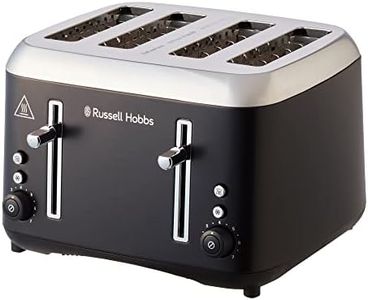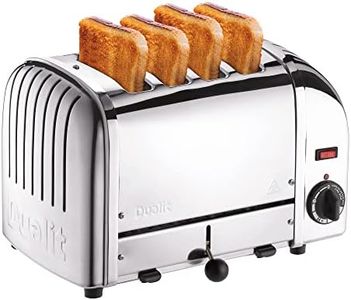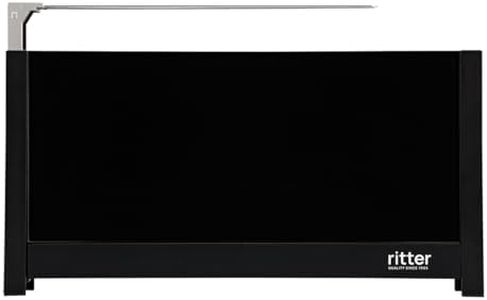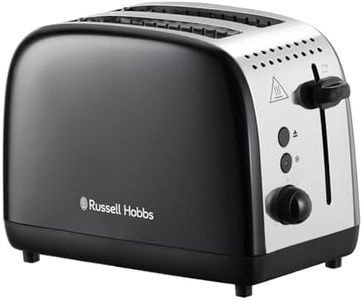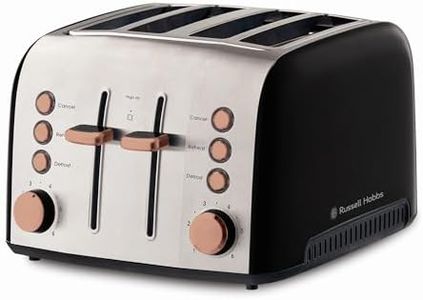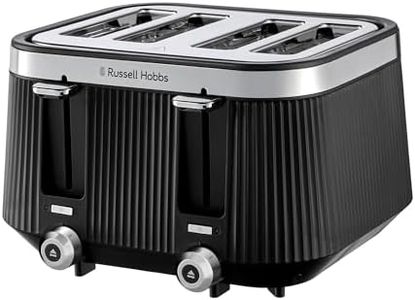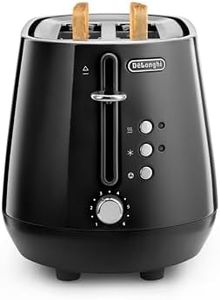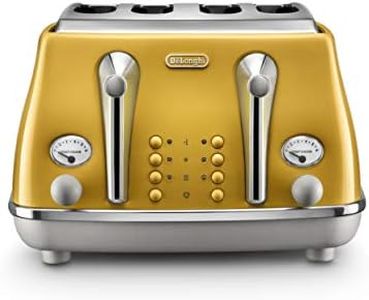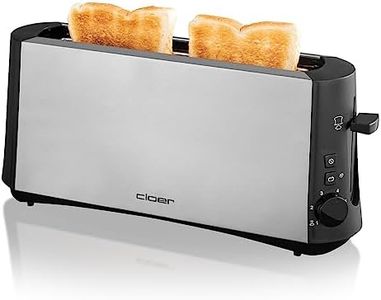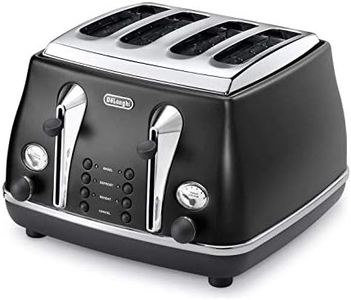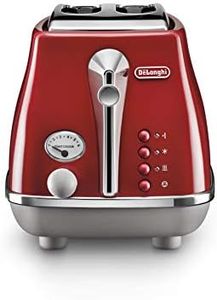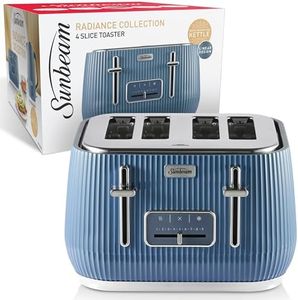We Use CookiesWe use cookies to enhance the security, performance,
functionality and for analytical and promotional activities. By continuing to browse this site you
are agreeing to our privacy policy
10 Best Commercial Toasters
From leading brands and best sellers available on the web.By clicking on a link to a third party's website, log data is shared with that third party.
Buying Guide for the Best Commercial Toasters
Choosing the right commercial toaster is essential for any food service business, as it helps ensure consistent quality and efficiency during busy service hours. Commercial toasters are designed to handle a high volume of bread, bagels, or other baked goods quickly and can come in different types and sizes that suit various operations, from a small cafe to a bustling hotel breakfast bar. When picking the best toaster for your needs, focus on the style of service you offer, the typical volume you expect, and the features that can make your kitchen workflow smoother.Toaster Type (Pop-up vs Conveyor)Toaster type refers to the way a toaster operates and how many slices it can process at once. Pop-up toasters are similar to home-use toasters and are good for smaller batches, ideal for cafes with intermittent toasting needs. Conveyor toasters move bread through a heated chamber on a moving belt and are better for high-volume settings, like hotels or busy restaurants, as they can toast a continuous stream of bread. Choose a pop-up style for occasional light toasting, and a conveyor style if you need to serve many slices quickly.
Slice Capacity per HourSlice capacity per hour indicates how many slices of bread the toaster can produce in one hour. Lower-capacity models (100–300 slices/hour) suit locations with minimal breakfast service or light snack offerings. Medium-capacity (300–800 slices/hour) suit busy cafes or school cafeterias, while high-capacity models (800+ slices/hour) are intended for very high-volume operations like hotels or buffets. Think about your peak demand: pick a toaster that matches the highest number of toasts you’d need to serve in your busiest hour.
Slot or Opening SizeSlot or opening size refers to the width and height of the toaster’s slots or conveyor entrance. If you plan to toast thick items like bagels, artisan breads, or Texas toast, look for wider slots or adjustable opening heights. For standard sandwich bread, a basic slot or opening will suffice. Ensure the toaster accommodates all bread types you plan to offer, preventing jammed slices or uneven toasting.
Heating Elements and ControlsHeating elements are the parts inside the toaster that actually toast the bread, and controls let you adjust the browning level. Toasters with separate adjustable controls for the top and bottom heaters offer more flexibility and can help with different types of bread. Look for simple, easy-to-use controls if you have a lot of changing staff, or more precise timer and browning settings if consistency is a must. Your choice should reflect your team’s experience level and the need for either speed or custom results.
Recovery Time and Warm-Up SpeedRecovery time is the toaster’s ability to quickly return to the right temperature after toasting multiple batches, while warm-up speed is about how quickly the toaster is ready to use from cold. Fast recovery and warm-up are important in places with lunchtime or breakfast rushes to prevent slowdowns. If you offer extended or all-day service, this may be less crucial, but if you get a large crowd all at once, choose a toaster designed for rapid cycling.
Ease of Cleaning and MaintenanceThe ease of cleaning is all about how simple it is to keep your toaster hygienic. Look for models with removable crumb trays, accessible heating elements, and minimal nooks for crumbs to collect. If you’ll be using the toaster all day or every day, simple maintenance will save you time and ensure reliability. Pick a design that matches your kitchen’s ability to clean between rushes and at the end of the day.
Footprint and SizeThe footprint refers to the amount of space the toaster takes up on your countertop. If your work space is limited, a compact model will be important, while larger kitchens can afford a bigger, higher-capacity machine. Measure your available space and think about how easily staff can access the toaster during busy periods. Choose a size that fits comfortably without crowding your kitchen.
